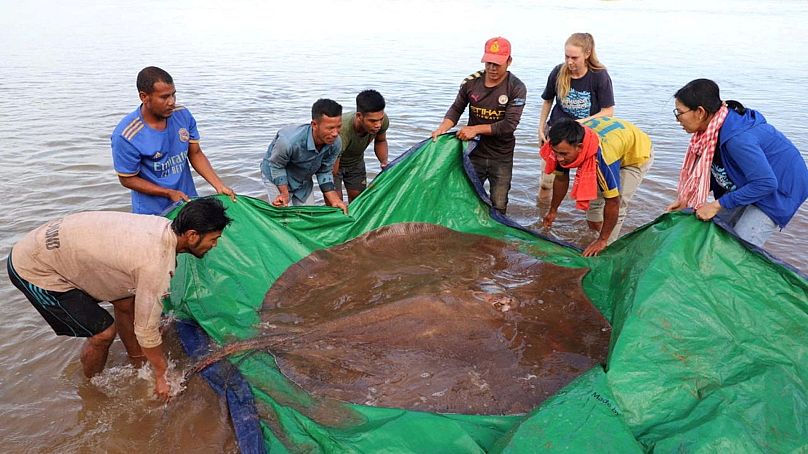While the discovery was welcomed, marine biologists warned that the biodiversity of the area was under threat.
A team of marine biologists have discovered an endangered giant freshwater stingray during a recent expedition to a remote stretch of the Mekong River in Cambodia.
While the discovery was welcomed, they warned that the biodiversity of the area was under threat.
The stingray was accidentally caught by fishermen in an 80-metre (260 ft) deep pool in the Mekong in Cambodia's northeastern Stung Treng province and the visiting scientists helped return the animal alive.
Zeb Hogan, a fish biologist at the University of Nevada, said finding the 180 kg (397 lb) stingray, spanning four metres, was important.
"This catch was significant because it confirms the existence of these big fish in the stretch of river," said Hogan, who led the USAID-funded Wonders of the Mekong expedition that wrapped up last week.
"This is a very remote stretch of river, it's not well studied, it's incredibly important for fisheries and biodiversity, and it's also a stretch of river that is under threat," he said.
The team used unmanned submersibles equipped with lights and cameras as part of its efforts to study the deep pools in the area.
Is hydropower damaging biodiversity in the Mekong?
The Mekong river feeds jungles, irrigates crops for tens of millions of people, and supports the Tonle Sap lake – which the most productive inland fishery on the planet.
Eleven hydropower dams are in various stages of planning in Cambodia, along with hundreds of dams on its tributaries.
This part of the river could suffer "devastating ecological effects" if proposed hydropower dams go ahead in the area, a statement from the expedition team said.
Other threats include illegal fishing and plastic waste.
Hogan, who's been studying the biodiversity in the Mekong for more than two decades, said the declining population of some freshwater fish in the river was very worrying.
"Historically, this section of river produced 200 billion young fish that then during the floods season disperse throughout all of Cambodia and even into Vietnam," Hogan concluded.












